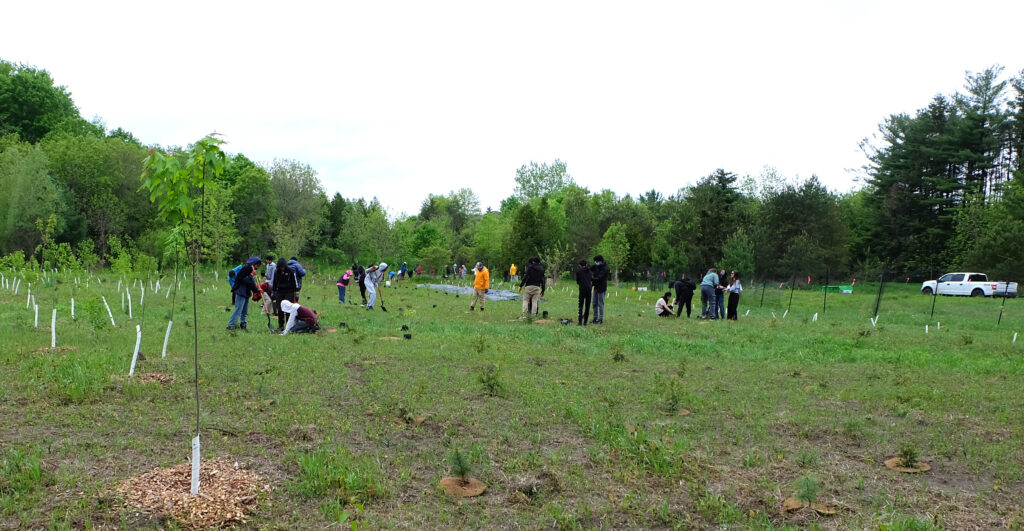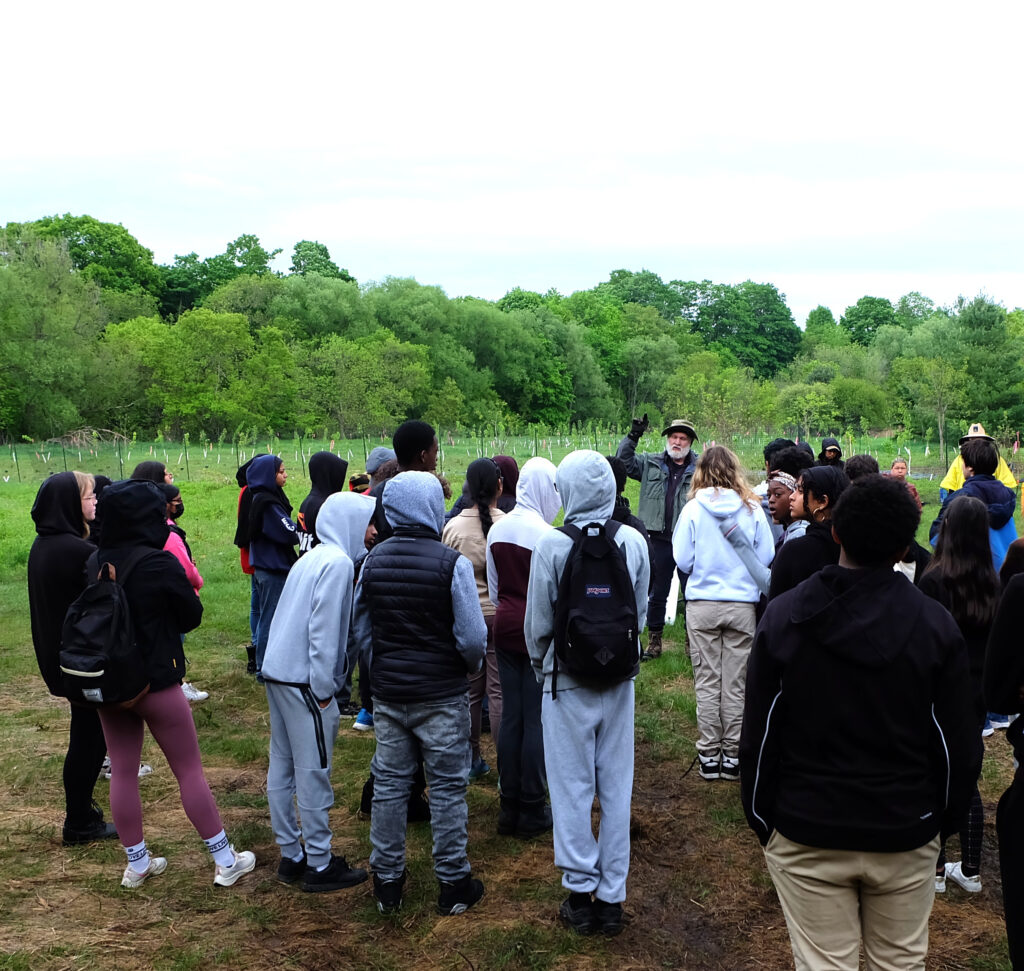How to engage young folks in conservation and restoration
Every field season, busloads of kids and teens descend upon the ravines, meadows and forests surrounding Rouge National Urban Park, which winds through the eastern edge of Toronto.
Swapping their textbooks for shovels, they plant native trees, flowers and shrubs in spaces where excessive mowing and grazing has reduced biodiversity. It’s a simple act that improves habitats for nearby species at risk and reduces flood damage to local ecosystems and residents’ properties.

They do so under the close supervision of the experienced staff and volunteers of the Friends of the Rouge Watershed (FRW), a local charitable organization that coordinates hands-on environmental education and restoration projects in and around the Rouge River — and a participant in WWF-Canada’s Nature and Climate Grant Program, presented in partnership with Aviva Canada. Since 1991, FRW has welcomed more than 71,000 young people with hands-on education about protecting nature.
One sunny day last field season, we took the opportunity to speak with Jim Robb — FRW’s general manager and a veteran environmental educator — about how to engage young people in conservation and restoration work, especially in the city.
How do you work with young people at Friends of the Rouge?
We work with local schools to host groups of students from elementary and secondary schools, as well as young people from clubs, community groups and religious organizations. Our specialty is planting events — we’ll show the students how to plant native trees and shrubs, supervise them as they plant their own, and then go for a walk to talk about our local wildlife and the importance of habitat protection and restoration.
In addition, we run a program called the Grey Tree Frog Apprentice Program, where we give about 15 students three to four days of leadership, environmental and ecological restoration training. Those kids are amazing. Some people we trained seven or eight years ago are now showing amazing leadership skills and doing amazing things. As just one example, one of our past students has gone on to get very involved in the divestment movement, to lobby universities to not invest in carbon-polluting oil production.

Why is youth engagement such a focus for your organization?
We’re located right beside a big city, which is both our biggest challenge and our biggest opportunity. With changing demographics, we need to make sure the next generation will take care of the park. By getting to know it, so they can appreciate it, we hope they’ll take care of it.
I think a lot of young people today in cities don’t have as much exposure to nature as they might have had in the past. They have less of a sense of their place in the natural world. Our hope is that by bringing them in to work with us we can help them reduce their “nature deficit disorder.” Our hope is that they’ll come to appreciate nature a bit more, and leave with a bit more understanding.
Is it a tough sell to get young people to care about nature and conservation? Or are they receptive to it?
I find young people are really open to take in the conservation messages that we share. They get it. What’s interesting is that they often end up educating their parents and grandparents about climate change and biodiversity. It’s not that their parents don’t care; they’re just busy with work and getting their kids educated and putting food on the table. But they hear it when their kids talk about it.
We are also located in a very diverse area of the Greater Toronto Area. Many of the young people who come to our planting events are first-generation Canadians, who are often getting their first exposure to this type of space. They then tell their parents about our work and this beautiful nature that exists right in their community. I think this is really important. We in the environmental movement have to ensure our messages about protecting biodiversity and combatting climate change are reflective of, and relevant to, the diverse communities we have within Canada. Kids can help us bridge the gap.
How young is too young?
We focus on youth in grades four through 12 for our planting events. Sometimes we’ll work with younger kids, but it can be a challenge; we need to pair them with older kids for some of the more physically demanding planting tasks.
But we love talking with younger kids. They tend to be really open-minded, and they’re like sponges. If you can reach a kid when they’re in grades three, four or five, you can have a real influence on how they see and understand nature.
Conservation and restoration work can be complicated. How do you communicate that to a young audience?

You need to simplify what you say, and you need to put it into a framework so they can see how it affects them directly. I try to use analogies that they can relate to. And you have to listen to what they tell you. Kids often come to me on walks with really surprising questions or observations. When they feel that they are heard, they tend to get more engaged in the work.
I find young people respond really well to what they can see. So, they might see that the native trees or shrubs we plant attract native butterflies and beneficial insects to our backyards; they might better appreciate that beauty of creation.
How do you know when you’re getting through to them?
It’s not always obvious. One of the things I’ve found is that, in the simple act of planting a tree or a wildflower, it’s like they are investing a little bit of themselves. They’re leaving something behind that is theirs; something they’ve done.
I’ll often bump into people years later who volunteered to plant trees with us as kids. Not too long ago, I went into my bank and the teller said ‘Friends of the Rouge! I planted with you 15 years ago, when I was this tall!’ I’ve had people tell me their time helping us changed their career path; I recently heard from a past volunteer who went on to study environmental engineering at university. Those kinds of things are very rewarding. That really makes us feel good.
Having done this for so long, what do you find most meaningful about teaching young people about nature?
I’ve worked in a variety of jobs, but nothing is better than working with young volunteers to help us, over time, transform a scarred landscape back into an ecological masterpiece of beauty and biodiversity.
There’s reason for optimism — I get to see it every day.
